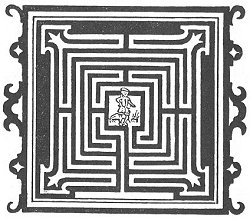

From the very first pages, The Labyrinth's descriptions-how to test soil between. The Gardener's Labyrinth was the first popular gardening book published in the English language, appearing around 1577. The hotbed gave us the perfect place to monitor the young flax plants and ensure they would be mature enough for the fall harvest.Lavishly illustrated with beautiful color reproductions of Renaissance artwork-including oil paintings and stained glass windows-and with over a hundred black-and-white drawings, this classic gardening book, now over four hundred years old, offers a delightful view of how Elizabethan gardeners practiced their craft.

For example, last summer, the gardeners used the hotbed to provide a space for growing flax. We still use the hotbed for this purpose at Pennsbury (see below). If prepared properly, the hotbed could retain its heat for several weeks.Īlthough its main purpose was to jumpstart vegetables in the cold weather, colonial gardeners would have used the hotbed year round to grow a variety of plants. Straw placed on top provided additional protection from the elements. Once the manure cooled to about seventy degrees Fahrenheit, the bed was ready for seeds. Colonial gardeners would have layered soil over fresh manure from the barn to create the heat source. A brick and wood structure, the hotbed protects seedlings from the bitter cold and provides the perfect environment for out-of-season growth. In Pennsbury’s garden, the hotbed is located opposite the riverside next to the cold frames. Hot beds were a variation on the standard raised bed frame. Raised bed allowed gardeners to adjust the composition of the soil, adding or lessening acidity depending on the plant being cultivated. 16th-century engraving of a gardener working on his raised garden beds (“The Gardener’s Labyrinth,” Thomas Hill).


 0 kommentar(er)
0 kommentar(er)
